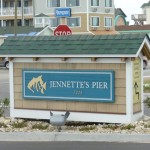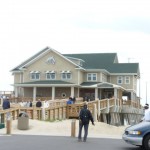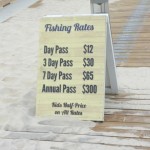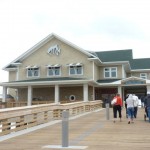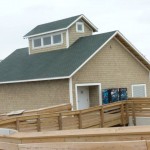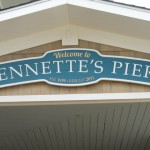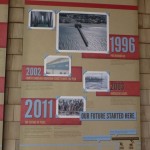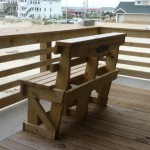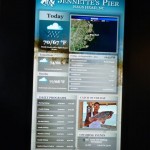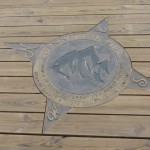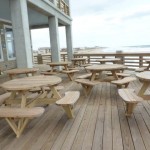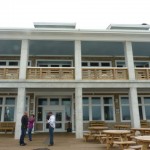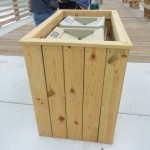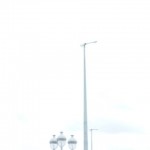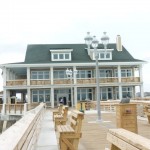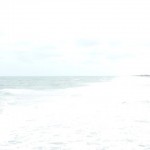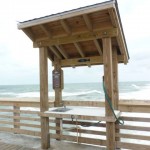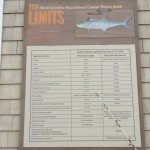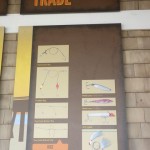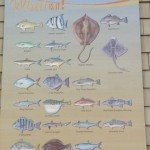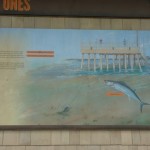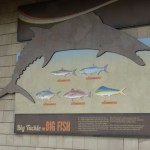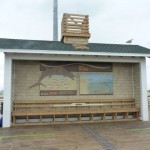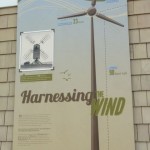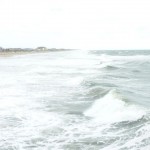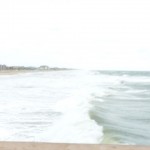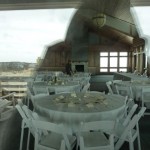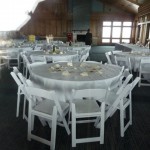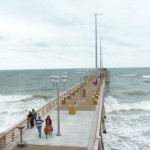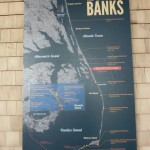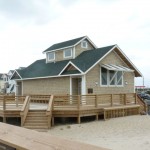 After school let out for the summer we headed with friends to Duck, NC for the weekend. The Town of Duck is located on the northern section of the Outer Banks mainland, not far (physically) from the Virginia border. We wanted to take advantage of staying in the northern Outer Banks, so we explored the Currituck Beach Lighthouse one morning.
After school let out for the summer we headed with friends to Duck, NC for the weekend. The Town of Duck is located on the northern section of the Outer Banks mainland, not far (physically) from the Virginia border. We wanted to take advantage of staying in the northern Outer Banks, so we explored the Currituck Beach Lighthouse one morning.
Ever since watching Pete’s Dragon as a child, lighthouses and light keepers always fascinated me. After reading “The Light Between Oceans” my fascination only grew stronger. Maybe I love the simplicity of their lifestyle or their strong connection to the water and ships they protect. Whatever the reason for my fascination, I’m thankful for being able to explore these historical landmarks.
History
Currituck Beach Lighthouse is located north of Duck in the historic village of Corolla, NC at 1101 Corolla Village Rd. In 1873 construction began on Currituck Beach Lighthouse to fill the gap of coastal darkness between Cape Henry Lighthouse in Virginia Beach and Bodie Island Lighthouse, just south of Nags Head, NC. It stands 162 ft tall overlooking the Currituck Sound and Atlantic Ocean. The lighthouse is unique in that they did not paint the exterior bricks. The lighthouse keepers and their families lived in the adjacent Victorian-style home until the 1930s when the U.S. Coast Guard assumed lighthouse duties. The U.S. Coast Guard automated the beacon, which continues to flash in 20-second intervals to alert ships at sea.
The lighthouse sat abandoned for decades after automating the beacon. In 1980, the non-profit Outer Banks Conservationists began to slowly restore the lighthouse over the next decade. The lighthouse opened to the public in 1990 and one of the keeper’s houses opened later as the gift shop. The main keepers’ house remains closed until restoration efforts finish.
 Climbing the Lighthouse
Climbing the Lighthouse
The base and first two landings of the lighthouse feature interesting exhibits about the lighthouse’s history. After paying the $10 admission fee and signing the waiver, I made separate trips with both girls up the winding 220 steps. Small landings between each floor offer chances to catch your breath and let others pass. We climbed slowly, but still reached the top of the lighthouse in a little over 5 minutes. We (so very carefully) walked around the outside of the lighthouse admiring the gorgeous panoramic water views.
When climbing the lighthouse stairs, small signs display in the windows letting patrons know the height and cardinal direction. The girls enjoyed learning how high up they climbed and looking out the windows. After climbing down the lighthouse we visited the museum gift shop and walked around nearby Historic Corolla Village.
Thumbs up: beautiful views, informative lighthouse museum, friendly volunteer workers
Thumbs down: nothing to report





























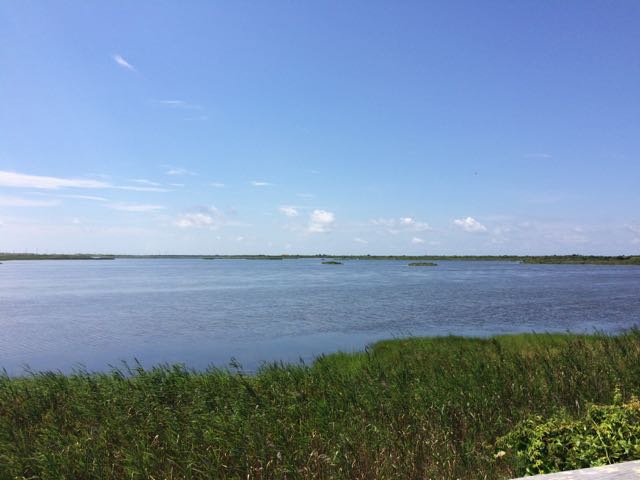 When we were in Nags Head last month we spent the last full day exploring Pea Island National Wildlife Refuge, which is located on a barrier island of the Outer Banks in NC. The Pea Island National Wildlife Refuge is part of a larger national wildlife refuge system with more than 500 units that was founded by President Teddy Roosevelt in 1903 to conserve the nation’s natural living treasures. The Pea Island Refuge was established in 1938 to provide a resting and winter habitat for migratory waterfowl. It features a visitor center, the North Pond Wildlife trail (which is part of the larger Charles Kuralt Trail), and 13 miles of beaches. We did a little bit of everything just before the big storms rolled in, making the trip a perfect last day adventure!
When we were in Nags Head last month we spent the last full day exploring Pea Island National Wildlife Refuge, which is located on a barrier island of the Outer Banks in NC. The Pea Island National Wildlife Refuge is part of a larger national wildlife refuge system with more than 500 units that was founded by President Teddy Roosevelt in 1903 to conserve the nation’s natural living treasures. The Pea Island Refuge was established in 1938 to provide a resting and winter habitat for migratory waterfowl. It features a visitor center, the North Pond Wildlife trail (which is part of the larger Charles Kuralt Trail), and 13 miles of beaches. We did a little bit of everything just before the big storms rolled in, making the trip a perfect last day adventure!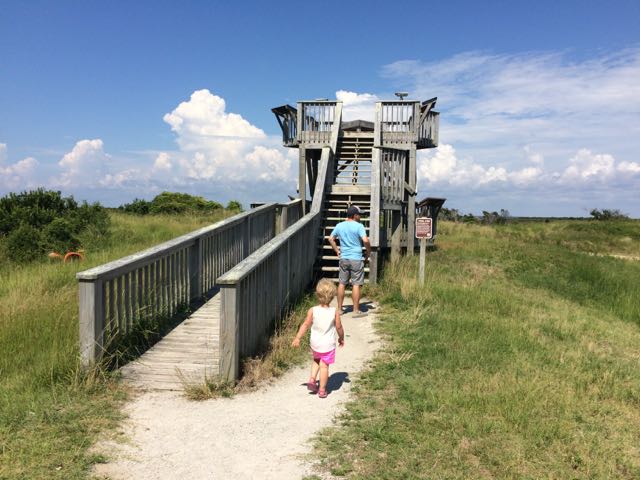 After exploring the visitor center we headed to the
After exploring the visitor center we headed to the 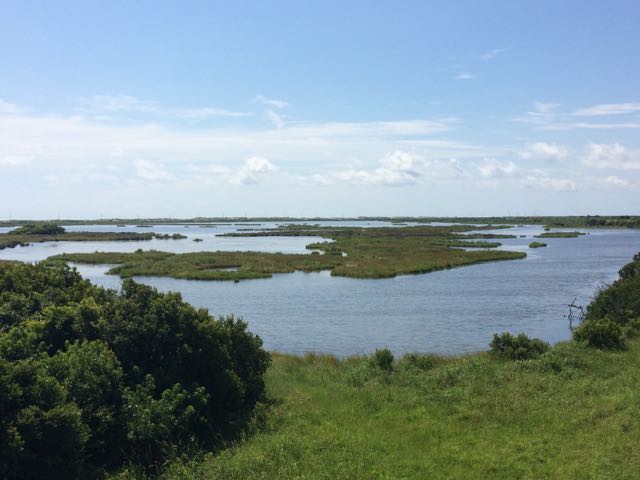 The North Pond Wildlife Trail is part of a larger grouping of trails that make up the Charles Kuralt Trail. It was established to encourage people to enjoy the wild lands and recognize this great NC native broadcast journalist who loved exploring remote places. The
The North Pond Wildlife Trail is part of a larger grouping of trails that make up the Charles Kuralt Trail. It was established to encourage people to enjoy the wild lands and recognize this great NC native broadcast journalist who loved exploring remote places. The 






























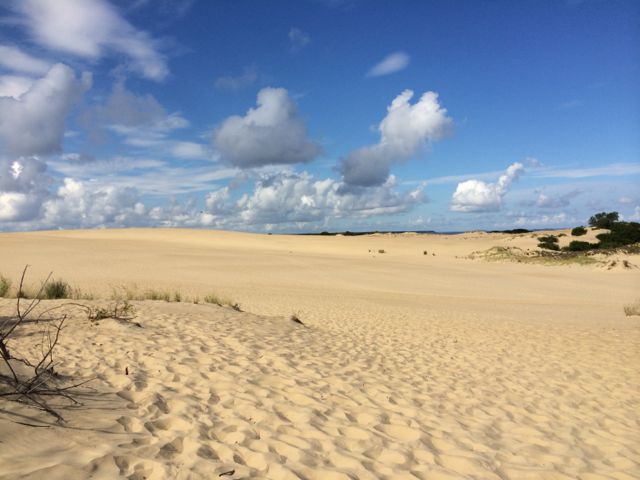
 Unfortunately, our visit to Jockey’s Ridge did not go as swimmingly as I would have liked. As with most things I plan with two small children, my expectations exceed reality and this was one of those examples. Knowing the sand is at least 10 degrees hotter than the outside temperature we got an early start to our trip and were in the parking lot area by 9:30am. After a short stop inside the visitor’s center, Bill and I set off with both girls to find the top of the dunes. We made our way to the end of the wooden walkway near the large group of visitors that were catching their breath from just coming off the dunes. We followed some of the other visitors along the loosely marked
Unfortunately, our visit to Jockey’s Ridge did not go as swimmingly as I would have liked. As with most things I plan with two small children, my expectations exceed reality and this was one of those examples. Knowing the sand is at least 10 degrees hotter than the outside temperature we got an early start to our trip and were in the parking lot area by 9:30am. After a short stop inside the visitor’s center, Bill and I set off with both girls to find the top of the dunes. We made our way to the end of the wooden walkway near the large group of visitors that were catching their breath from just coming off the dunes. We followed some of the other visitors along the loosely marked 

































 After walking back we headed over to the lighthouse to talk to the NPS rangers. We had a great conversation with the young rangers who shared some of their favorite facts about the lighthouse: 1) how the Confederate troops blew up the lighthouse to prevent Union troops from occupying it, 2) that the lighthouse still uses its original Fresnel lens from Paris and 3) how the lighthouse still aids in navigation today given its checkered history. Despite the high heat index they still allowed visitors to climb a few steps to the first landing. We explored the old oil storage rooms in the front and then took pictures of the amazing view up the heavy duty spiral staircase before heading out.
After walking back we headed over to the lighthouse to talk to the NPS rangers. We had a great conversation with the young rangers who shared some of their favorite facts about the lighthouse: 1) how the Confederate troops blew up the lighthouse to prevent Union troops from occupying it, 2) that the lighthouse still uses its original Fresnel lens from Paris and 3) how the lighthouse still aids in navigation today given its checkered history. Despite the high heat index they still allowed visitors to climb a few steps to the first landing. We explored the old oil storage rooms in the front and then took pictures of the amazing view up the heavy duty spiral staircase before heading out.



























































